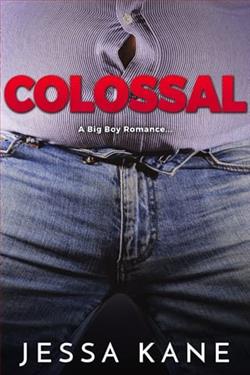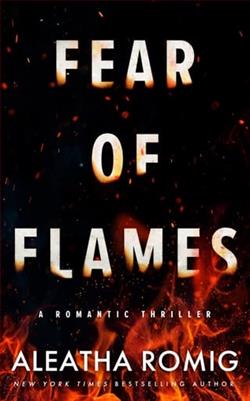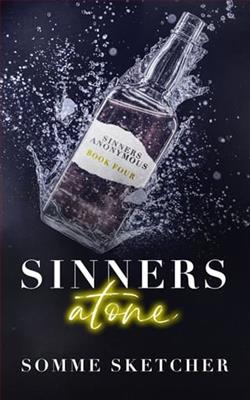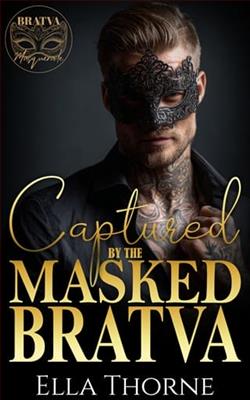Page 98 of The Christmas Spirits on Tradd Street
“And then he was killed trying to make his escape, and the rubies were saved. By whom, I don’t know for sure. Everything’s conjecture at this point. All I do know for sure is that Eliza didn’t kill herself, and she wants the record to be set straight.”
I returned to studying the maze, the lines and curves simple, like in an artist’s original sketch before it’s filled in with color. I could almost hear Jack speaking in my head about Carrollton Vanderhorst.So he figures a cunning way to hide the jewels and uses clues to lead the way just in case he dies before he can find out what to do with the rubies.A top and bottom of the puzzle were clearly identified now, the top two corners curved in opposite directions, like an arch. Just like the arch over the gate leading into the cemetery.
I jerked my head up, almost laughing at Carrollton Vanderhorst’s cleverness. “Jayne, I really need to talk with Anthony.”
Jayne looked down at her phone, then began dialing. She waited a moment before ending the call. “It went straight to voice mail.”
I looked around the dining room, then walked quickly out to the foyer, toward the stairs. “Where’s his room?”
“Melanie, that would be an invasion of privacy....”
I didn’t stop. “This is your house, Jayne, and he is a guest. I’m looking for something specific—a couple of drawings I gave him earlier. They belong to me, so technically I’m only trying to recover my property.”
“Fine,” she said, walking past me down the hall. She stopped outside one of the bedroom doors and tapped. “Anthony?” After waiting a respectful moment, she pushed the door open and waited for me on the threshold.
The room was elegantly appointed with the furnishings of the late owner, Button Pinckney, Jayne’s aunt. The bed was neatly made and thedraperies open. The only thing missing was any sign of occupancy. “Didn’t he bring a suitcase or anything?”
“Sure, but I don’t know what was in it. I assumed it was full of clothes. I haven’t been in here, Melanie, if that’s what you’re implying.”
I rolled my eyes. “Did he bring a laptop or printer or anything so he could work while he was here?”
She nodded, her gaze traveling around the room. “He had both—I know that because I saw the laptop a few times and could hear the printer from this room.” She walked to the closet and opened it. “Empty,” she said, her voice hollow. “No printer, laptop. Or clothes. Maybe he just decided he’d already overstayed his welcome and, with the puzzle finished, figured it was time to head home.”
“Maybe,” I said. “Let me try to reach him again.” I dialed his number, but the call went straight to voice mail. “Maybe his battery died. Doesn’t matter—we’ll see him when we get back to my house.”
Avoiding her gaze, I knelt on the floor and lifted the bed skirt, then moved around the room, opening every drawer, finally stopping at the trash can tucked next to the chest of drawers. I eagerly plucked up the can and poured the balled-up papers out on top of the bedspread.
“What are these?” Jayne asked.
“These are multiple copies of the same thing—Anthony was just trying to get them all to be the same size.” I opened a ball of paper and smoothed it on the bed, then began opening another, starting two different piles. “One is the copy of the drawing Joseph Longo made from a paper he found on Robert Vanderhorst’s desk back in the twenties. The other is a page from the Vanderhorst family archives at the Charleston Museum—the ones Marc tried to throw out and Anthony found. And the third...” I held up a black-and-white copy on my phone.
“Is the little panel from the mausoleum door,” Jayne finished, her eyes widening in understanding. She reached for one of the balled-up papers and began flattening it. “So these three pictures belong together and are some kind of clue?”
I nodded quickly, adding another paper to one of the piles. “The old cemetery fence was brick and was destroyed when the old mausoleumwas rebuilt. Anyway, Samuel Vanderhorst designed the new wrought-iron fence and gates, as well as the mausoleum door. But the two gates were destroyed or lost around the time of Hurricane Hugo, so all that remains of them are these drawings.”
“Oh, my gosh,” Jayne said as she moved more quickly. “So if we get these all to fit together, they should show us something,” she said excitedly.
“That’s my theory, anyway,” I said, my own excitement at having someone who understood the way I thought almost masking the unexpected twinge of annoyance that the person was Jayne.
When we’d divvied up all the wrinkled pages into their own piles, I spread them out into fans and began to sort through them, comparing those that seemed to match up best with ones from the other two. Catching on to what I was doing, Jayne pulled one from the third pile and held it up to the two I held. “I think this one works.”
I nodded my thanks and took it, then held the three of them together up toward the light. “These aren’t exact—I imagine Anthony would have the ones that are—but they will work.”
I ran out of the room and toward the stairs. “Where are you going?” Jayne called from right behind me.
I didn’t answer but led her to the dining room table. “Hold these.” I shoved the three pages into her hand, then pulled out a dining room chair to stand on. Holding my phone as high as it would go over the puzzle, I took a photo. “You have a printer, right?”
Before she’d finished nodding, I’d e-mailed the photo to her. “Go pull the photo up in the scrapbooking software you’re always talking about, and make it fit in an eight-by-eight square so it matches the other three. And please make it black-and-white. While you’re doing that, I’m going to try Anthony again. Failing that, I’ll call Mother to see if she’s at the house yet and if she’s seen Anthony.”
She was already running up the stairs by the time I’d finished speaking. I used the initials, S.V., to orient each picture, then pulled out my phone again. When Jayne returned fifteen minutes later, I shook my head in answer to her unasked question, then took the page she handedto me. “Perfect,” I said, smiling at her. I placed the picture of the completed puzzle behind the other three sheets and then, after a shared look of anticipation with Jayne, held them up to the light as I remembered Anthony had done.
I wasn’t sure who gasped louder, but I was suddenly very glad that someone was with me to share my discovery. With the three pictures held together, four distinct dark circles were clearly visible from the layering of the lines of each page. And each dark circle was now projected onto the puzzle made from the bricks.
“I’ll go get a marker,” Jayne said. She raced out of the room, and returned quickly with a black Sharpie.
“Good thinking.” I continued to hold the pages up to the light while Jayne marked the back side of the last page with black marker. When she was done, I lowered them to the table and slid out the last page, using the marker to darken the spots that had bled through to the front of the puzzle page.
“It’s a map of the cemetery, isn’t it?” Jayne asked.















